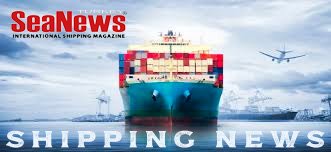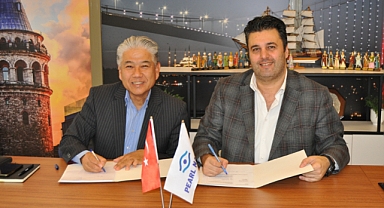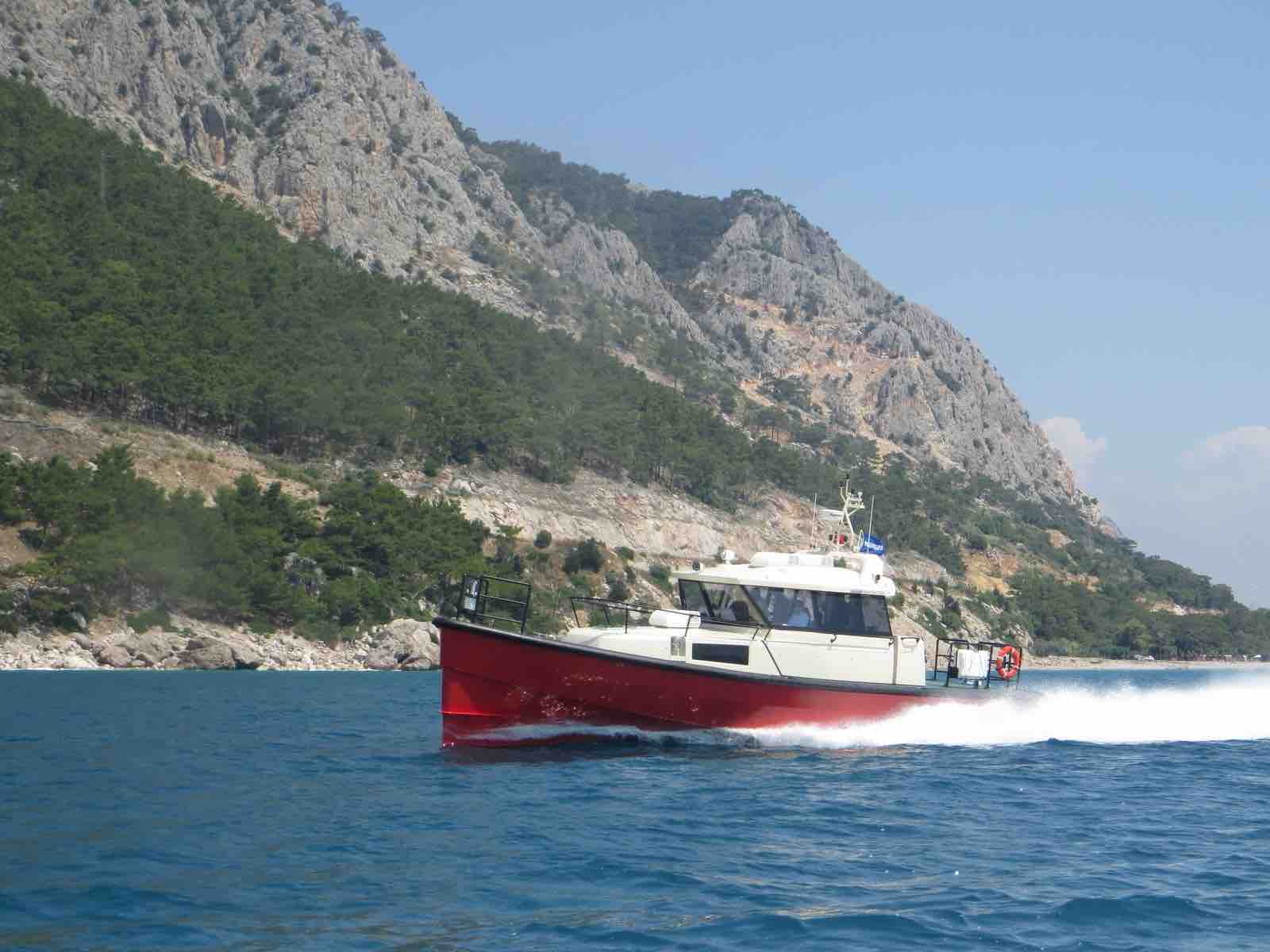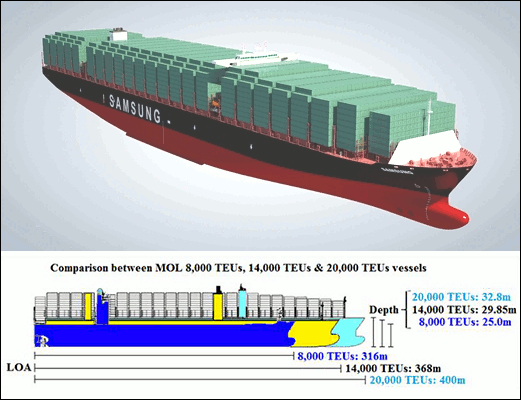THE Port of baltimore has received four all-electric neopanamax cranes and will put them into commission in early 2022 - the final step necessary to open a second berth and enable the Seagirt Marine Terminal to handle two postpanamax vessels simultaneously.
Port officials described the development as an important step toward luring more Asian services to Baltimore, reports IHS Media.
Efforts have already paid off with new Maersk and MSC strings beginning to call at Baltimore. The Maersk TP 20 Loop originates in Vietnam with a rotation of 13 vessels, the first of which has also arrived. The MSC Indus 2 service originating in India with eight vessels began calling at Baltimore during the summer.
'When the four new cranes become operational during the first quarter [of 2022], Seagirt will have a total of eight neopanamax cranes over two berths capable of handling the largest ships that transit the Panama Canal. We can handle ships up to 16,000 TEU, which is the largest ship that the Panama Canal can handle,' said William Doyle, executive director of the Maryland Port Administration.
A third berth will be built and open in early 2025, and a fourth berth is also in the long-term plan, he said.
The Port of Baltimore is seeking to reverse a loss in share of Asian imports to other east coast ports. In March 2020 - just before the Covid crisis began, Baltimore accounted for 5.7 per cent of Asian imports to the US east coast, according to PIERS. The port's share of imports through the east coast had fallen to 3.9 per cent as of last month.
Asian imports have declined 7.1 per cent in Baltimore in the first eight months of this year compared with a year earlier, according to PIERS.
The Port of New York and New Jersey has seen its Asian share grow from 33.6 per cent in March 2020 to 37 per cent last month. Savannah's share rose from 29.7 per cent to 31.3 per cent during the same period.
Mr Doyle said the second berth, along with the new Maersk and MSC services, will be the first steps in recapturing share. However, the MSC Indus 2 service will deploy vessels up to 8,000 TEU and the Maersk TP 20 will deploy vessels of up to 5,500 TEU, as opposed to the 10,000 TEU-plus vessels that regularly call on other east coast ports.
'A second deep berth will allow us to handle more of that Asian cargo that maybe hasn't gone through Baltimore before,' he said. 'We've also handled 23 ad hoc ships over the past year - vessels diverted to Baltimore that were not on a regularly scheduled service call - totalling more than 35,000 TEU containers.'
Mr Doyle said intermodal rail is a key pillar of the growth strategy because Baltimore is closer to Midwest markets than its competitors to the south.
The port has been unable to effectively compete against neighbouring ports in recent years in terms of intermodal connectivity because CSX Transportation and Norfolk Southern Railway (NS) cannot double-stack trains out of Baltimore.
However, after nearly a decade of delays owing to a lack of funding, CSX will break ground later this year on a project to reconstruct the Howard Street Tunnel to accommodate double-stacking. The US$466 million project, which includes the tunnel and 22 other locations between Baltimore and Philadelphia, should be complete in late 2024 or early 2025.
Maryland is also in the early stages of working with NS and Amtrak to address two bottlenecks in the state.
SeaNews Turkey
Port officials described the development as an important step toward luring more Asian services to Baltimore, reports IHS Media.
Efforts have already paid off with new Maersk and MSC strings beginning to call at Baltimore. The Maersk TP 20 Loop originates in Vietnam with a rotation of 13 vessels, the first of which has also arrived. The MSC Indus 2 service originating in India with eight vessels began calling at Baltimore during the summer.
'When the four new cranes become operational during the first quarter [of 2022], Seagirt will have a total of eight neopanamax cranes over two berths capable of handling the largest ships that transit the Panama Canal. We can handle ships up to 16,000 TEU, which is the largest ship that the Panama Canal can handle,' said William Doyle, executive director of the Maryland Port Administration.
A third berth will be built and open in early 2025, and a fourth berth is also in the long-term plan, he said.
The Port of Baltimore is seeking to reverse a loss in share of Asian imports to other east coast ports. In March 2020 - just before the Covid crisis began, Baltimore accounted for 5.7 per cent of Asian imports to the US east coast, according to PIERS. The port's share of imports through the east coast had fallen to 3.9 per cent as of last month.
Asian imports have declined 7.1 per cent in Baltimore in the first eight months of this year compared with a year earlier, according to PIERS.
The Port of New York and New Jersey has seen its Asian share grow from 33.6 per cent in March 2020 to 37 per cent last month. Savannah's share rose from 29.7 per cent to 31.3 per cent during the same period.
Mr Doyle said the second berth, along with the new Maersk and MSC services, will be the first steps in recapturing share. However, the MSC Indus 2 service will deploy vessels up to 8,000 TEU and the Maersk TP 20 will deploy vessels of up to 5,500 TEU, as opposed to the 10,000 TEU-plus vessels that regularly call on other east coast ports.
'A second deep berth will allow us to handle more of that Asian cargo that maybe hasn't gone through Baltimore before,' he said. 'We've also handled 23 ad hoc ships over the past year - vessels diverted to Baltimore that were not on a regularly scheduled service call - totalling more than 35,000 TEU containers.'
Mr Doyle said intermodal rail is a key pillar of the growth strategy because Baltimore is closer to Midwest markets than its competitors to the south.
The port has been unable to effectively compete against neighbouring ports in recent years in terms of intermodal connectivity because CSX Transportation and Norfolk Southern Railway (NS) cannot double-stack trains out of Baltimore.
However, after nearly a decade of delays owing to a lack of funding, CSX will break ground later this year on a project to reconstruct the Howard Street Tunnel to accommodate double-stacking. The US$466 million project, which includes the tunnel and 22 other locations between Baltimore and Philadelphia, should be complete in late 2024 or early 2025.
Maryland is also in the early stages of working with NS and Amtrak to address two bottlenecks in the state.
SeaNews Turkey









